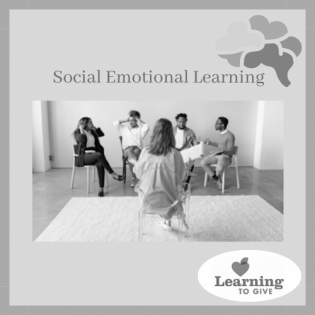SEL: Philosophical Chairs - Intro to Bias
Keywords:
Bias
Relationship Skills
Self-Awareness
Social Awareness
Stereotypes
This activity prompts young people to think and speak critically with their peers about a real-world topic. They consider how the topic applies to them and how it might impact others. During this activity, youth share their opinions, debate their positions, and sometimes even change sides as their opinions shift to accommodate new information or other viewpoints. This activity introduces young people to the concepts of bias and stereotypes by discussing how the judgments we make can be very damaging.
SEL Connection:
- Self-Awareness: examine prejudices and biases
- Social Awareness: show concern for the feelings of others
- Responsible Decision-Making: communicate effectively; choose language with empathy
Warm-Up
- Define judgment as "the process of forming an opinion or evaluation by comparison and discernment."
- Ilustrate the idea by getting quick reactions to two pictures. Show just the tattooed non-doctor image from this photo. (Hide the side with the person wearing a stethoscope and lab coat.) Ask the young people to say the first word that pops in their heads. "What is your impression of this person?"
- Write the words they say in a list on a chart or white board.
- Show the other image from the set, which is the same person wearing a medical lab coat. Ask the young people again to say the first word that pops in their heads. "What is your impression of this person?"
- Write their words in a list to the right of the first list on the chart or white board.
- Then show the two images together and say, "These are the same person." Allow them to react and say, "Today we are going to talk about judging a book by its cover. Does anyone know what it means to make a judgment about someone?"
Activity Instructions
- Place two chairs in the front or center of the room. Print in large letters and post signs "agree" and "disagree" on the opposite sides of the room.
- As you read the first statement, tell participants to reflect on what they think about the statement and then stand on either the agree or disagree side of the room. Statement One: "It's dangerous to make assumptions about a person just by looking at them."
- Invite participants - one from each side of the room - to sit in the chairs. The two people in chairs take turns sharing their beliefs about the statement, beginning their statements with "I agree ..." or "I disagree..."
- Ask the whole group, "Have your opinions changed?" If so, they may switch sides of the room - if they can explain their reasoning. Allow time for individuals to share their thoughts and reasoning, beginning their statements with "I agree ..." or "I disagree..."
- If individuals change their minds over the course of the discussion, they are free to switch sides, as long as they can explain their reasoning for why.
- Repeat this procedure with the other statements for the Philosophical Chairs discussion:
- It's dangerous to make assumptions about a person just by looking at them.
- The world would be a better place if nobody judged each other.
- Everyone judges each other based on what they see.
Whole Group Discussion Questions
- People often say "don't judge a book by its cover." What does that mean?
- What does it mean to judge? Is judging always bad?
- What is bias? How can being aware of our bias help us act with more fairness?
Self Reflection Writing Prompts
Describe a time when you misjudged someone based on their appearance or when someone misjudged you.
Wrap Up
View and discuss this animated YouTube video made in collaboration with high school students: Sterotypes Character Animation
- What messages, emotions, or new ideas will you take away after watching this film? What does it mean to look at people more openly?
- What questions do you still have?
Extension
View and discuss this YouTube video about bias: What Is Bias? - Intro for young children
